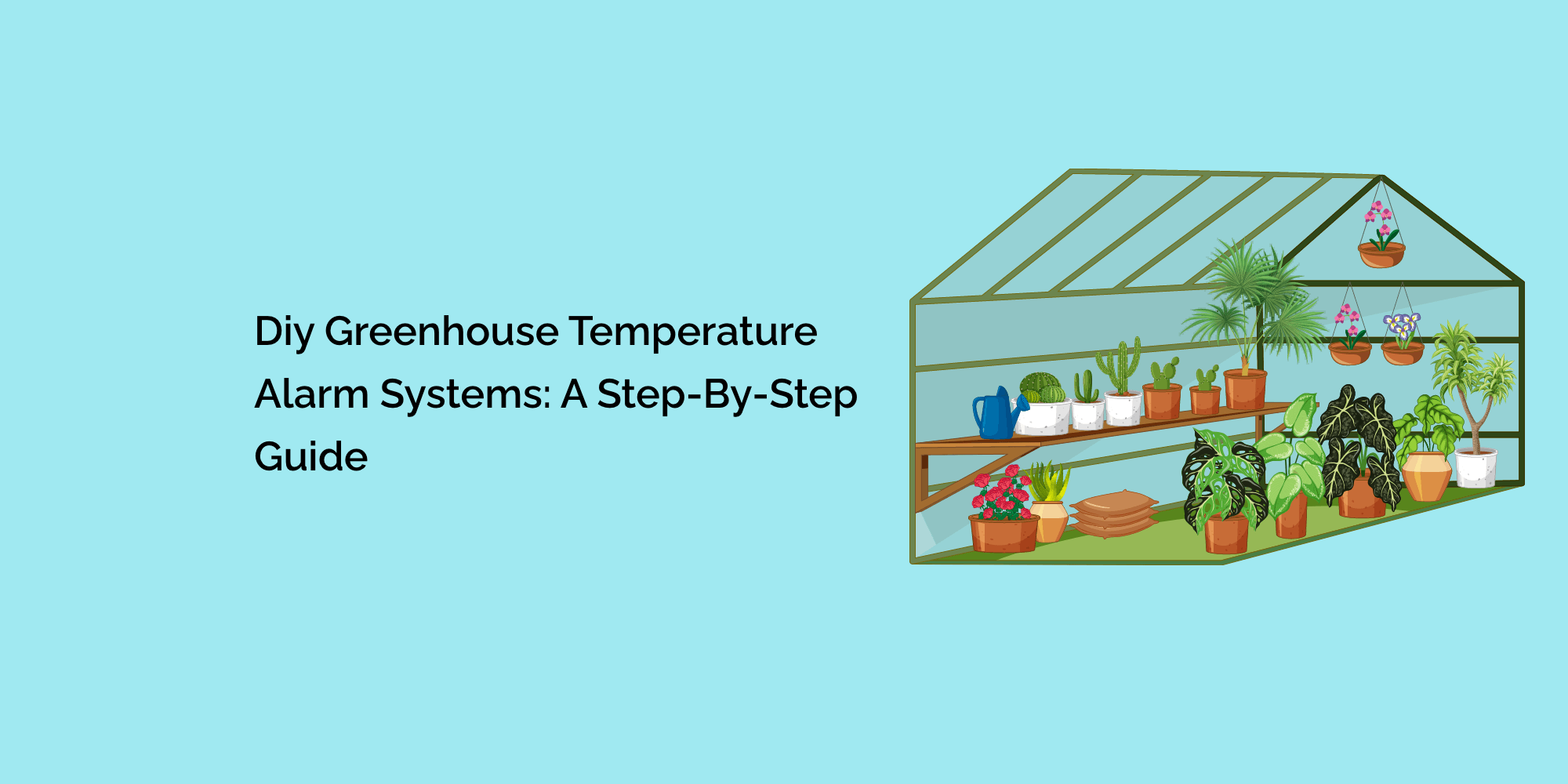Greenhouse temperature control is essential for creating optimal growing conditions and safeguarding plants from extreme temperature fluctuations. DIY greenhouse temperature alarm systems provide an affordable and customizable solution for growers who want to monitor and maintain the ideal temperature range in their greenhouses. This blog will provide a step-by-step guide to help you build your DIY greenhouse temperature alarm system. From selecting the right components to assembling the design and setting up alerts, we will walk you through creating a reliable and effective temperature monitoring system. By the end of this guide, you'll have the knowledge and confidence to set up a DIY temperature alarm system that meets your specific needs.
Determine Your Temperature Monitoring Requirements
- Before you begin building your DIY greenhouse temperature alarm system, it's essential to determine your specific temperature monitoring requirements. Consider factors such as the size of your greenhouse, the number of temperature zones you want to monitor, and the desired accuracy of temperature readings. This information will guide you in selecting the appropriate components for your system.
Select the Right Components
To build your DIY greenhouse temperature alarm system, you'll need the following components:
-
Temperature Sensors: Choose temperature sensors suitable for greenhouse environments. Options include digital temperature sensors, thermistors, or waterproof temperature sensors. Ensure they are compatible with the microcontroller or data logger you use.
-
Microcontroller or Data Logger: Select a microcontroller or data logger capable of reading temperature sensor inputs and recording data. Arduino and Raspberry Pi are popular options with ample online resources and community support.
-
Display Unit (optional): If you want a real-time temperature display, consider adding an LCD or LED display. This allows for convenient temperature monitoring within the greenhouse.
-
Power Supply: Choose a power supply suitable for your system. Battery-powered options provide flexibility, while AC adapters offer a constant power supply.
- Connectivity (optional): If you want remote monitoring or alert notifications, consider adding connectivity options such as Wi-Fi or GSM modules. These enable you to receive temperature alerts on your mobile device or computer.
Build and Assemble the System
Once you have gathered the necessary components, follow these steps to build and assemble your DIY greenhouse temperature alarm system:
-
Connect the Temperature Sensor: Connect the temperature sensor to the microcontroller or data logger following the manufacturer's instructions. This typically involves connecting the sensor's signal, power, and ground pins to the appropriate pins on the microcontroller.
-
Program the Microcontroller or Data Logger: Write or upload the code to the microcontroller or logger to read temperature sensor inputs and record data. You can find example code and tutorials online for popular platforms like Arduino or Raspberry Pi.
- Set Temperature Thresholds: Define the desired temperature thresholds in your code. These thresholds will determine when the alarm should be triggered.
Configure Alert Notifications
To receive alert notifications when temperature thresholds are exceeded or dropped below-desired levels, you can configure your DIY greenhouse temperature alarm system in the following ways:
-
Local Alarms: Set up local alarms using buzzers or LED indicators. Program the microcontroller or data logger to trigger these alarms when crossing temperature thresholds.
-
Remote Monitoring: Connect your system to Wi-Fi or GSM modules if you want remote monitoring capabilities. Configure the microcontroller or data logger to send temperature data and alerts to your mobile device or computer.
- Email or SMS Alerts: Set up email or SMS alerts using cloud-based services or third-party platforms. Configure the microcontroller or data logger to send email notifications or text messages when temperature thresholds are breached.
Install and Calibrate the System
- Install the temperature sensors in strategic locations within your greenhouse. Place them where temperature fluctuations are likely to occur, or your plants may be most susceptible to temperature stress. Ensure the sensors are adequately secured and protected from moisture or physical damage. It's also important to calibrate the temperature sensors periodically to maintain accurate temperature readings. Follow the manufacturer's guidelines for calibration procedures and frequency.
Certainly! Here are some frequently asked questions (FAQs) about DIY greenhouse temperature alarm systems:
What is a DIY greenhouse temperature alarm system?
A DIY greenhouse temperature alarm system is a customized setup that allows growers to monitor temperature fluctuations within their greenhouse. It typically consists of temperature sensors, a microcontroller or data logger, and optional display units or connectivity modules for remote monitoring and alert notifications.
Why should I consider building a DIY greenhouse temperature alarm system?
Building a DIY greenhouse temperature alarm system offers several benefits. It allows you to tailor the plan to your specific needs, offers cost savings compared to pre-built designs, and provides a hands-on learning experience. DIY systems also offer flexibility for customization and future expansions.
What components do I need to build a DIY greenhouse temperature alarm system?
It would help if you had temperature sensors, a microcontroller or data logger, a power supply, and optional display units or connectivity modules. Additionally, you may need wires, connectors, resistors, and a breadboard or PCB for circuitry.
Conclusion
Building your DIY greenhouse temperature alarm system offers flexibility, affordability, and the satisfaction of customizing a solution that meets your needs. Following this step-by-step guide, you can create an effective temperature monitoring system that helps maintain optimal growing conditions and protects your plants from temperature fluctuations. Remember to select the right components, program your microcontroller or data logger, configure alert notifications, and perform regular maintenance and monitoring. With your DIY greenhouse temperature alarm system in place, you'll have peace of mind knowing that you can proactively address temperature-related issues, ultimately leading to healthier plants and better greenhouse productivity.








